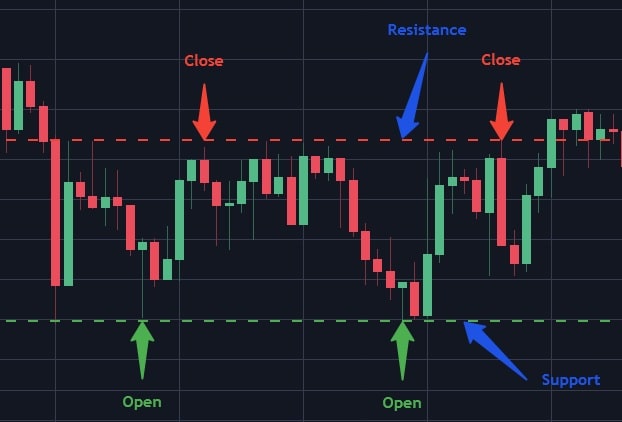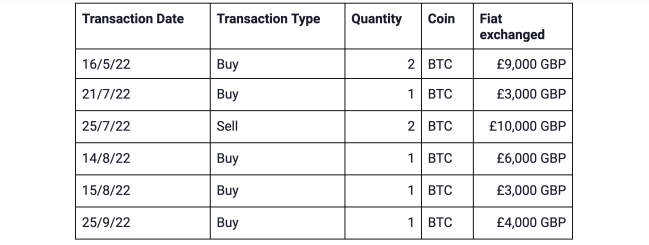The world of cryptocurrency trading can be intimidating for beginners, with its complex terminology and fast-paced market fluctuations. However, with the right strategies, newcomers can navigate this exciting and potentially lucrative space.
Effective trading strategies are crucial for success in crypto trading, helping beginners to minimize risks and maximize gains. By understanding and applying proven techniques, those new to crypto trading can build a solid foundation for their investment journey, increasing their chances of achieving their financial goals in this dynamic and rapidly evolving market.
Effective Crypto Trading Strategies for New Investors
For beginners, navigating the cryptocurrency market can be overwhelming due to its volatility and complexity. However, by adopting the right strategies, new investors can mitigate risks and potentially reap significant rewards.
The key is to understand the market dynamics and choose a strategy that aligns with one’s risk tolerance and investment goals.
Understanding Dollar-Cost Averaging
Dollar-cost averaging is a strategy that involves investing a fixed amount of money at regular intervals, regardless of the market’s performance. This approach helps reduce the impact of volatility and timing risks, as it averages out the cost of investments over time. By doing so, beginners can avoid the pitfalls of trying to time the market and instead focus on long-term growth. Consistent investment and disciplined approach are crucial for the success of this strategy.
The Importance of Diversification
Diversification is another vital strategy for beginners in crypto trading. By spreading investments across a variety of cryptocurrencies, investors can minimize risk. This is because different cryptocurrencies may perform differently under the same market conditions, thereby balancing the portfolio. Diversification can help protect against significant losses if one particular cryptocurrency experiences a downturn. It’s essential to research and understand the different types of cryptocurrencies and their potential for growth.
Setting Stop-Loss Orders
Setting stop-loss orders is a risk management strategy that involves setting a price level at which to automatically sell a cryptocurrency to limit potential losses. This strategy is particularly useful in the volatile crypto market, where prices can fluctuate rapidly. By setting a stop-loss order, investors can protect their investments from significant downturns and avoid making emotional decisions based on short-term market movements.
| Strategy | Description | Risk Level |
|---|---|---|
| Dollar-Cost Averaging | Investing a fixed amount of money at regular intervals | Low to Medium |
| Diversification | Spreading investments across various cryptocurrencies | Medium |
| Stop-Loss Orders | Automatically selling a cryptocurrency at a set price | Low |
What is the easiest crypto strategy for beginners?

The easiest crypto strategy for beginners is to start with a simple and straightforward approach that involves minimal risk and complexity. This can be achieved by focusing on a long-term investment strategy that involves buying and holding a diversified portfolio of established cryptocurrencies.
Understanding the Basics of Crypto Investment
To develop an effective crypto strategy, beginners need to understand the basics of crypto investment, including the different types of cryptocurrencies, their use cases, and the underlying technology. It’s essential to learn about the market trends, volatility, and the factors that influence the price of cryptocurrencies.
 Can I Lose All My Money in Crypto?
Can I Lose All My Money in Crypto?- Learn about the different types of cryptocurrencies, such as Bitcoin, Ethereum, and altcoins.
- Understand the concept of blockchain technology and its applications.
- Stay up-to-date with market news and trends to make informed investment decisions.
Dollar-Cost Averaging: A Simple Investment Strategy
Dollar-cost averaging is a simple and effective investment strategy that involves investing a fixed amount of money at regular intervals, regardless of the market’s performance. This approach helps to reduce the impact of market volatility and timing risks, making it an ideal strategy for beginners.
- Set a fixed amount to invest in cryptocurrencies at regular intervals, such as weekly or monthly.
- Choose a diversified portfolio of cryptocurrencies to invest in.
- Automate your investments to avoid emotional decisions based on market fluctuations.
Risk Management: A Crucial Aspect of Crypto Investment
Risk management is a critical aspect of crypto investment, as the market can be highly volatile and unpredictable. Beginners need to understand the risks involved and take steps to mitigate them.
- Set a budget and stick to it to avoid over-investing in cryptocurrencies.
- Diversify your portfolio to minimize the risk of losses.
- Use stop-loss orders to limit potential losses if the market moves against your investment.
What is the best way to trade crypto for beginners?

The best way to trade crypto for beginners involves a combination of education, risk management, and a well-thought-out strategy. It is essential for beginners to start by understanding the basics of cryptocurrency, including how it works, the different types of cryptocurrencies available, and the underlying technology behind them.
Choosing a Reputable Exchange
When it comes to trading crypto, selecting a reputable exchange is crucial. Beginners should look for exchanges that are well-established, have a good track record of security, and offer a user-friendly interface.
Some key factors to consider when choosing an exchange include:
- the variety of cryptocurrencies available for trading
- the fees associated with transactions and withdrawals
- the level of customer support provided
Developing a Trading Strategy
A well-developed trading strategy is vital for success in crypto trading. Beginners should start by defining their investment goals and risk tolerance. They should then choose a strategy that aligns with these goals, such as day trading, swing trading, or long-term investing.
Key elements to consider when developing a trading strategy include:
- understanding market analysis and how to read charts
- setting clear entry and exit points for trades
- staying up-to-date with market news and trends
Managing Risk
Risk management is a critical component of successful crypto trading. Beginners should be aware that the crypto market can be highly volatile, and prices can fluctuate rapidly. To manage risk, traders should consider strategies such as diversification, position sizing, and the use of stop-loss orders.
Some effective risk management techniques include:
- diversifying your portfolio across different cryptocurrencies
- using leverage cautiously or avoiding it altogether
- regularly reviewing and adjusting your trading strategy as needed
Which is the best trading strategy for crypto?

The best trading strategy for crypto is a topic of much debate among traders and investors. The cryptocurrency market is known for its volatility, making it challenging to develop a one-size-fits-all strategy. However, some approaches have proven to be more effective than others.
Cryptocurrency Market Analysis
A crucial aspect of developing a successful trading strategy is understanding the cryptocurrency market. This involves analyzing market trends, sentiment, and external factors that can impact prices. To do this effectively, traders can follow these steps:
 How Do Crypto Taxes Work in the US and UK?
How Do Crypto Taxes Work in the US and UK?- Stay up-to-date with market news and developments
- Use technical analysis tools, such as charts and indicators, to identify patterns and trends
- Monitor market sentiment through social media and other online platforms
Risk Management Techniques
Effective risk management is essential for successful cryptocurrency trading. This involves developing strategies to minimize losses and maximize gains. Some key risk management techniques include:
- Setting stop-loss orders to limit potential losses
- Diversifying a portfolio to reduce exposure to any one particular asset
- Position sizing to manage the amount of capital at risk
Trading Style Considerations
Different traders have different styles and preferences when it comes to cryptocurrency trading. Some may prefer a more active approach, while others may prefer a longer-term strategy. When developing a trading strategy, it’s essential to consider the following:
- Scalping, which involves making multiple small trades in a short period
- Swing trading, which involves holding positions for a shorter period than investing, but longer than day trading
- Long-term investing, which involves holding positions for an extended period
What is the 30 day rule in crypto?

The 30-day rule in crypto refers to a tax regulation that affects cryptocurrency traders and investors. According to this rule, if a cryptocurrency is sold at a loss and then repurchased within 30 days, the loss may be disallowed for tax purposes. This rule is designed to prevent traders from claiming a loss on a sale only to immediately rebuy the same or substantially identical cryptocurrency, thereby avoiding taxes on the gain.
Understanding the 30-Day Rule
The 30-day rule is a critical consideration for cryptocurrency traders who engage in frequent buying and selling. When a trader sells a cryptocurrency at a loss, they may be able to claim that loss as a deduction on their tax return. However, if they repurchase the same or substantially identical cryptocurrency within 30 days, the IRS may consider the sale to be a wash sale, and disallow the loss. This can have significant tax implications for traders who are not aware of the rule.
- The 30-day rule applies to purchases made within 30 days before or after the sale of a cryptocurrency at a loss.
- The rule is intended to prevent traders from abusing the tax system by claiming losses on sales that are not truly realized.
- Traders who are subject to the 30-day rule may be required to adjust their tax returns to reflect the disallowed loss.
Implications of the 30-Day Rule
The 30-day rule can have significant implications for cryptocurrency traders who are not aware of it. If a trader sells a cryptocurrency at a loss and then repurchases it within 30 days, they may be subject to tax penalties and fines. To avoid these penalties, traders should be careful to keep track of their transactions and avoid repurchasing the same or substantially identical cryptocurrency within 30 days.
- Traders should keep accurate records of their transactions to ensure compliance with the 30-day rule.
- The 30-day rule applies to all types of cryptocurrency, including Bitcoin, Ethereum, and other altcoins.
- Traders who are unsure about the application of the 30-day rule should consult with a tax professional.
Strategies for Avoiding the 30-Day Rule
There are several strategies that cryptocurrency traders can use to avoid the 30-day rule. One approach is to wait at least 31 days before repurchasing a cryptocurrency that was sold at a loss. Another approach is to purchase a different cryptocurrency that is not substantially identical to the one that was sold. Traders can also consider using tax-loss harvesting strategies to minimize their tax liability.
- Traders can avoid the 30-day rule by waiting at least 31 days before repurchasing a cryptocurrency.
- Purchasing a different cryptocurrency can help traders avoid the 30-day rule.
- Tax-loss harvesting strategies can help traders minimize their tax liability and avoid the 30-day rule.
Frequently Asked Questions
What is the most effective crypto trading strategy for beginners?
The most effective crypto trading strategy for beginners is to start with a simple approach, such as dollar-cost averaging or long-term holding. This involves investing a fixed amount of money at regular intervals, regardless of the market’s performance, to reduce the impact of volatility. It’s essential to educate yourself, set clear goals, and avoid impulsive decisions based on emotions.
How do I manage risk when trading cryptocurrencies as a beginner?
To manage risk when trading cryptocurrencies as a beginner, it’s crucial to set a budget and stick to it. You should also diversify your portfolio by investing in a variety of assets, use stop-loss orders to limit potential losses, and avoid over-leveraging your trades. Additionally, staying informed about market trends and news can help you make more informed decisions.
What are the key indicators to analyze when trading cryptocurrencies?
When trading cryptocurrencies, key indicators to analyze include moving averages, relative strength index (RSI), and Bollinger Bands. These technical indicators can help you identify trends, predict price movements, and make informed decisions. It’s also essential to stay up-to-date with market news, sentiment analysis, and fundamental analysis to get a comprehensive view of the market.
 What’s the Difference Between Spot and Futures Trading in Crypto?
What’s the Difference Between Spot and Futures Trading in Crypto?Can I use technical analysis for crypto trading as a beginner?
Yes, you can use technical analysis for crypto trading as a beginner. Technical analysis involves studying charts and patterns to predict future price movements. Start by learning basic concepts, such as support and resistance levels, trends, and chart patterns. You can also use online resources and tools to help you analyze the market and make more informed trading decisions.

